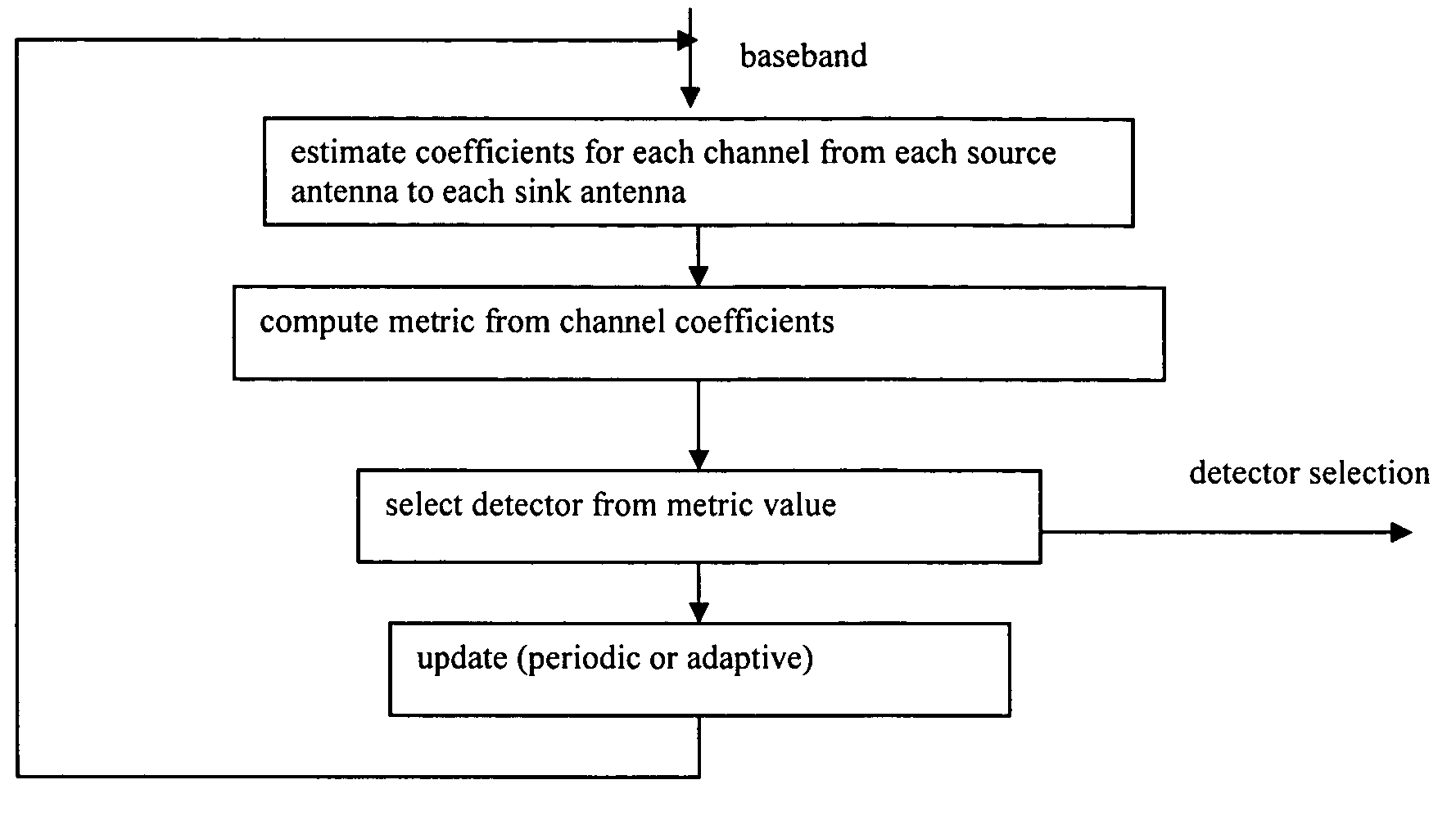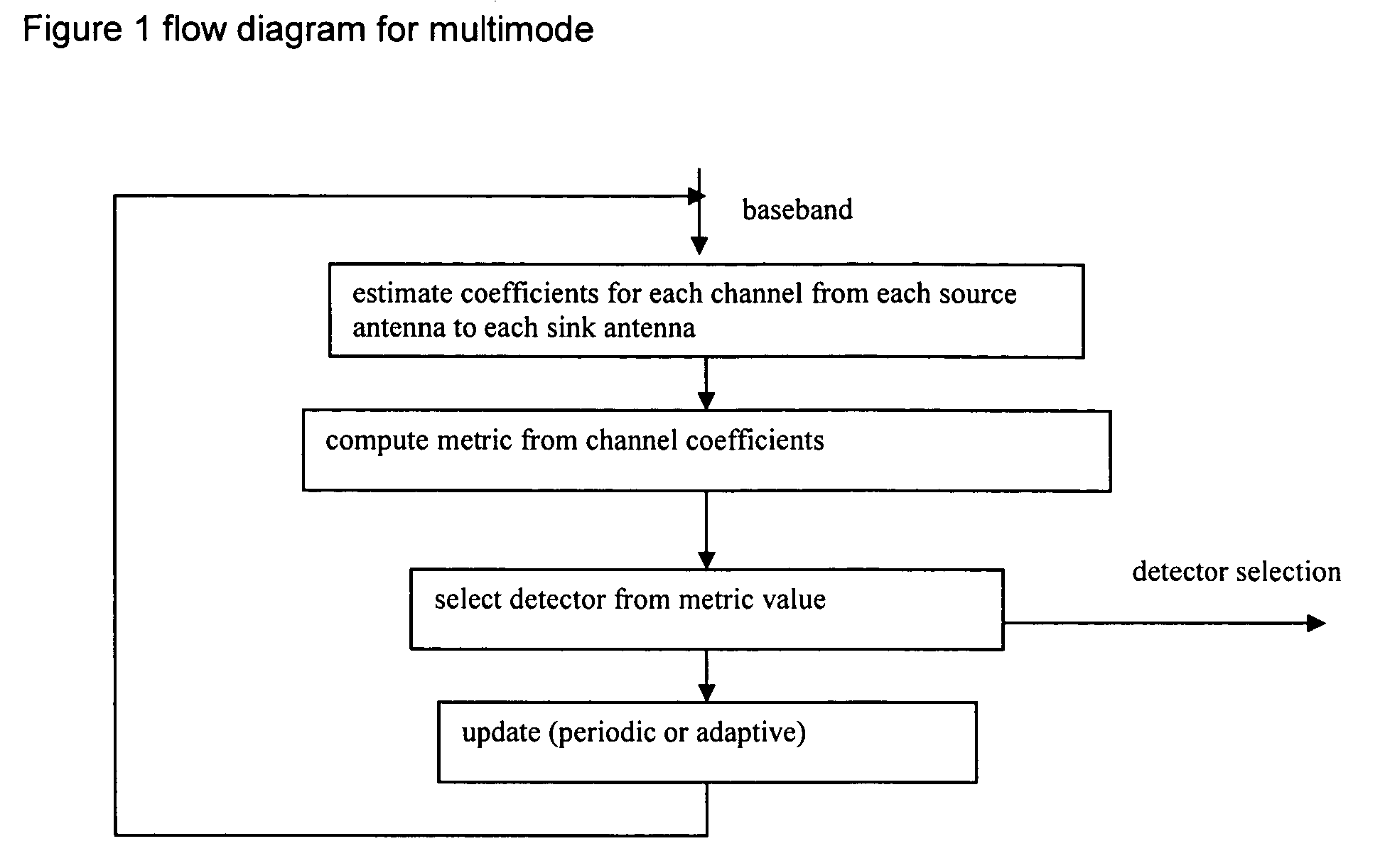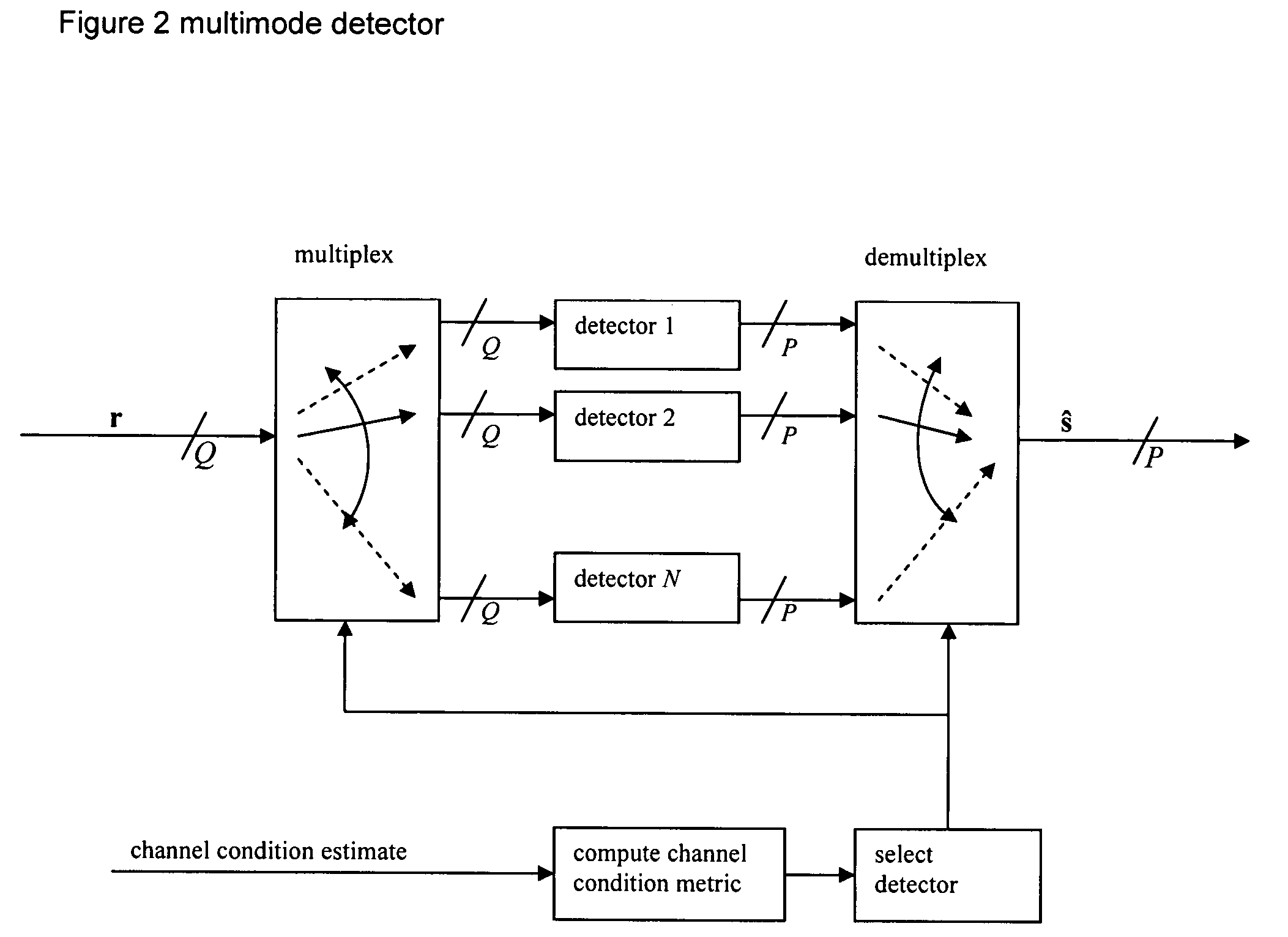Multimode detection
a detection method and multi-mode technology, applied in the field of communication systems, can solve problems such as intersymbol interference and multi-user interference, reduce computational complexity, and reduce the computational complexity of the system with multiple transmit antennas
- Summary
- Abstract
- Description
- Claims
- Application Information
AI Technical Summary
Benefits of technology
Problems solved by technology
Method used
Image
Examples
Embodiment Construction
1. Overview
[0012] Preferred embodiment multimode detectors and detection methods have detection mode selection dependent upon channel estimation; FIG. 2 shows a preferred embodiment detector and FIG. 1 is a flow diagram of the mode selection operation which includes updating. The mode selection allows for high performance with lower effective computational complexity; indeed, a target performance (such as within 0.2 dB of maximum likelihood detection performance) could be specified and the lowest complexity (or lowest power consumption) detection meeting the performance target would be selected. Preferred embodiment receivers and transceivers include preferred embodiment detectors and / or detection methods, and apply to multi-input, multi-output (MIMO) antenna systems.
[0013] Preferred embodiment communication systems, such as cellular phones and wireless local area networks, include preferred embodiment receivers employing preferred embodiment detection. The detection computations...
PUM
 Login to View More
Login to View More Abstract
Description
Claims
Application Information
 Login to View More
Login to View More - R&D
- Intellectual Property
- Life Sciences
- Materials
- Tech Scout
- Unparalleled Data Quality
- Higher Quality Content
- 60% Fewer Hallucinations
Browse by: Latest US Patents, China's latest patents, Technical Efficacy Thesaurus, Application Domain, Technology Topic, Popular Technical Reports.
© 2025 PatSnap. All rights reserved.Legal|Privacy policy|Modern Slavery Act Transparency Statement|Sitemap|About US| Contact US: help@patsnap.com



